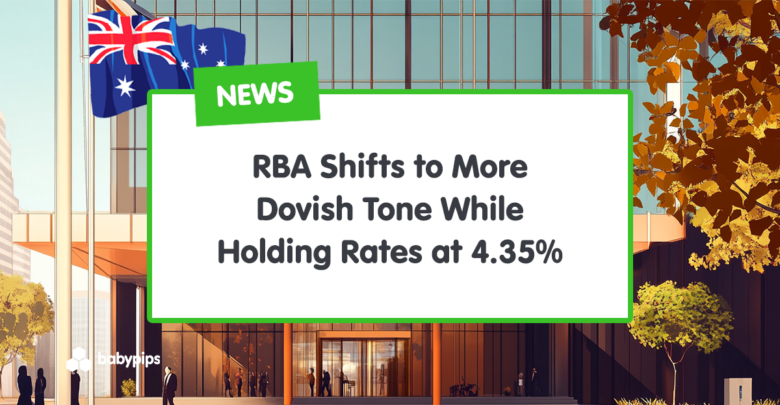
The Reserve Bank of Australia (RBA) maintained its cash rate at 4.35% at today’s meeting (as discussed in our Event Guide) while adopting a notably more dovish stance, removing previous guidance that “it is not ruling anything in or out” and signaling growing confidence in inflation’s return to target.
Link to December Reserve Bank of Australia Monetary Policy Statement
In its statement, the RBA showed increased optimism about inflation’s trajectory while acknowledging economic challenges ahead. The Board noted that while inflation remains above the 2-3% target range, recent data suggests price pressures are easing more consistently than in previous months.
Key points from the RBA statement:
- Core inflation has moderated to 3.5%, though still above target range
- Economic growth has significantly slowed, with business conditions at post-2020 lows
- Labor market remains tight with unemployment at 4.1%
- Board dropped previous guidance on future policy moves
- Supply-demand imbalances in the economy are narrowing
- Fourth-quarter inflation data due in January will be crucial for February meeting
Australian dollar vs. Major Currencies: 15-min

Overlay of AUD vs. Major Currencies Chart by TradingView
The Australian dollar saw significant volatility following the RBA’s announcement. An initial sharp decline across the board reflected the market’s immediate reaction to the more dovish tone, with AUD falling most notably against the euro, yen and greenback.
However, the currency found support during the Asian session as traders digested the balanced nature of the statement – acknowledging progress on inflation while maintaining a watching brief on economic conditions. The Aussie managed to recover a tiny bit of ground through London and U.S. trade but remained under pressure and in ranges, especially against USD, CAD, and Sterling.
The possibility of rate cuts as early as February 2025 seems to be gaining traction in market pricing, though much will depend on upcoming inflation data and labor market developments. This shift in RBA’s stance marks a significant change from its previous hawkish position, potentially signaling the end of the tightening cycle that began in 2022.


